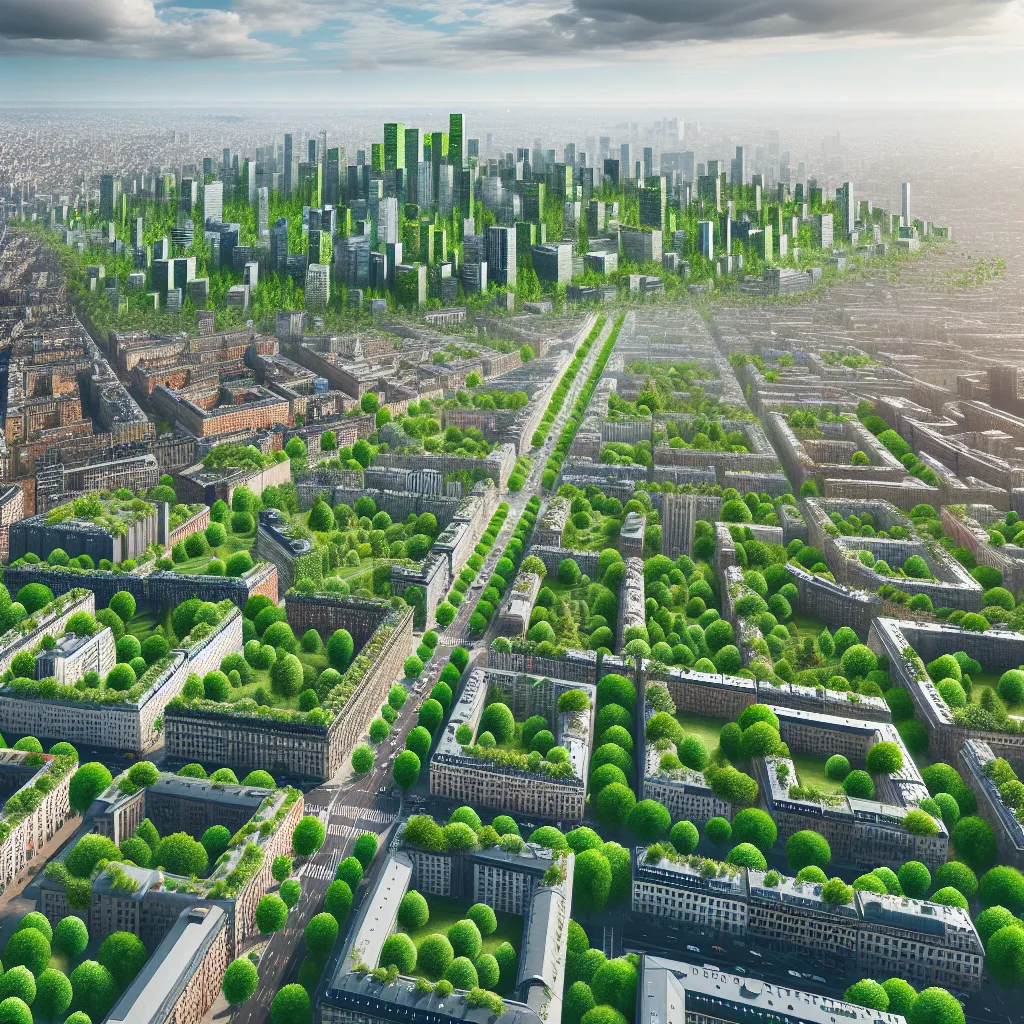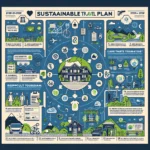The IELTS Reading section is a crucial component of the test, assessing your ability to comprehend complex texts and extract relevant information. Today, we’ll focus on a topic that has gained significant attention in recent years: “The importance of green spaces in urban areas.” This subject has appeared in various forms in past IELTS exams and remains highly relevant due to ongoing urbanization and environmental concerns. Given its relevance to current global issues, there’s a strong possibility that similar themes may appear in future IELTS Reading tests.
 Urban Green Spaces
Urban Green Spaces
Reading Passage
The Vital Role of Green Spaces in Urban Environments
Urban green spaces, ranging from expansive parks to small community gardens, play a crucial role in enhancing the quality of life in cities. As urbanization continues to accelerate globally, the importance of these natural havens within concrete jungles has never been more pronounced. Green spaces offer a multitude of benefits that extend far beyond mere aesthetic appeal, contributing significantly to the environmental, social, and economic well-being of urban areas.
From an environmental perspective, urban green spaces act as the lungs of cities. Trees and vegetation in these areas absorb carbon dioxide and release oxygen, helping to mitigate air pollution—a persistent problem in many urban centers. Moreover, these natural spaces play a vital role in urban temperature regulation. The phenomenon known as the “urban heat island effect,” where cities experience higher temperatures than surrounding rural areas due to heat-absorbing surfaces like concrete and asphalt, can be significantly reduced by the presence of green spaces. Vegetation provides shade and releases water vapor, effectively cooling the surrounding air and creating more comfortable microclimates within the city.
The ecological benefits of urban green spaces extend to biodiversity conservation as well. Parks, gardens, and even small green patches can serve as habitats for various plant and animal species, creating corridors that allow wildlife to move through urban landscapes. This is particularly important in maintaining ecological balance and preserving local flora and fauna that might otherwise be displaced by urban development.
From a social standpoint, green spaces serve as communal areas that foster social interaction and community cohesion. They provide venues for recreational activities, sports, and cultural events, encouraging physical activity and social engagement among city dwellers. Studies have shown that access to green spaces is associated with improved mental health, reduced stress levels, and enhanced overall well-being. In dense urban environments, where living spaces may be limited, public green areas offer a much-needed respite from the fast-paced urban lifestyle.
Economically, the presence of well-maintained green spaces can have a positive impact on property values and local economies. Homes and businesses near parks or tree-lined streets often command higher prices, reflecting the desirability of green surroundings. Additionally, attractive green spaces can boost tourism and encourage outdoor dining and retail activities, contributing to the vibrancy of urban economies.
Urban planners and policymakers are increasingly recognizing the importance of integrating green spaces into city designs. Innovative approaches such as green roofs, vertical gardens, and the transformation of unused lots into community gardens are being employed to maximize green coverage in space-constrained urban areas. These initiatives not only address environmental concerns but also contribute to creating more livable and sustainable cities.
However, the development and maintenance of urban green spaces face several challenges. Competition for land in densely populated cities often leads to the prioritization of housing or commercial developments over green areas. Additionally, the costs associated with creating and maintaining these spaces can be substantial, requiring ongoing commitment from local authorities and communities.
Despite these challenges, the undeniable benefits of urban green spaces make them an essential component of sustainable urban development. As cities continue to grow and evolve, the integration of nature into urban landscapes will be crucial in creating resilient, healthy, and livable urban environments for future generations. The importance of green spaces in urban areas extends far beyond their immediate aesthetic appeal, playing a vital role in shaping the environmental, social, and economic fabric of our cities.
Questions
True/False/Not Given
Determine if the following statements are True, False, or Not Given based on the information in the passage.
- Urban green spaces only provide aesthetic benefits to cities.
- The urban heat island effect can be mitigated by the presence of green spaces.
- Green spaces in cities can help in conserving local biodiversity.
- All urban residents have equal access to green spaces in their neighborhoods.
- The creation of urban green spaces is always prioritized over housing developments.
Multiple Choice
Choose the correct letter, A, B, C, or D.
-
According to the passage, urban green spaces contribute to air quality improvement by:
A) Filtering dust particles
B) Absorbing carbon dioxide and releasing oxygen
C) Reducing vehicle emissions
D) Increasing wind flow in cities -
The text suggests that green spaces in urban areas can:
A) Completely eliminate the need for air conditioning
B) Replace the need for rural conservation areas
C) Provide habitats for wildlife in cities
D) Solve all urban environmental problems -
The economic impact of urban green spaces includes:
A) Directly creating jobs in all sectors
B) Reducing the cost of living in cities
C) Potentially increasing nearby property values
D) Guaranteeing higher profits for all local businesses
Matching Headings
Match the following headings to the appropriate paragraphs in the passage. You may use each heading once, more than once, or not at all.
A) Challenges in Developing Urban Green Spaces
B) Environmental Benefits of City Parks
C) Economic Advantages of Green Areas
D) Social Impacts of Natural Spaces in Cities
E) Innovative Approaches to Urban Greening
F) The Multifaceted Importance of Urban Green Spaces
- Paragraph 2
- Paragraph 4
- Paragraph 5
- Paragraph 7
Summary Completion
Complete the summary below using words from the box. Use NO MORE THAN TWO WORDS for each answer.
| vegetation | property values | microclimates | heat island | community gardens |
| social interaction | green roofs | carbon dioxide | urban planning | biodiversity |
Urban green spaces play a crucial role in mitigating the (13) ____ effect in cities. The presence of trees and other (14) ____ helps in absorbing (15) ____ and creating cooler (16) ____. These spaces also contribute to preserving urban (17) ____ by providing habitats for various species. From a social perspective, they encourage (18) ____ and improve mental health. Economically, they can positively impact (19) ____. Modern (20) ____ incorporates innovative solutions like (21) ____ and (22) ____ to maximize green coverage in cities.
Answer Key
- False
- True
- True
- Not Given
- False
- B
- C
- C
- B
- D
- C
- A
- heat island
- vegetation
- carbon dioxide
- microclimates
- biodiversity
- social interaction
- property values
- urban planning
- green roofs
- community gardens
Explanations
- False – The passage clearly states that green spaces offer benefits “far beyond mere aesthetic appeal.”
- True – The text mentions that green spaces can reduce the urban heat island effect.
- True – The passage states that urban green spaces can serve as habitats and corridors for wildlife.
- Not Given – The text doesn’t provide information about the equality of access to green spaces.
- False – The passage mentions that there’s often competition for land, with green spaces not always prioritized.
- B – The passage explicitly states that trees and vegetation absorb carbon dioxide and release oxygen.
- C – The text mentions that green spaces can serve as habitats for various plant and animal species in cities.
- C – The passage states that properties near green spaces often have higher values.
- B – This paragraph focuses on the environmental benefits of urban green spaces.
- D – This paragraph discusses the social impacts of green spaces in cities.
- C – This paragraph outlines the economic advantages of urban green areas.
- A – This paragraph addresses the challenges in developing and maintaining urban green spaces.
13-22. The answers are filled in based on the context provided in the passage and the words available in the box.
Common Mistakes
-
Overlooking specific details: Many test-takers might miss subtle distinctions, such as the passage stating benefits “far beyond mere aesthetic appeal” rather than only aesthetic benefits.
-
Generalizing information: Some might assume that all cities prioritize green spaces equally, which isn’t stated in the text.
-
Confusing similar concepts: For instance, mixing up the roles of green spaces in temperature regulation and air quality improvement.
-
Inferring beyond the text: Assuming information that isn’t explicitly stated, such as equal access to green spaces for all urban residents.
-
Misinterpreting economic impacts: Some might overstate the economic benefits, assuming green spaces directly create jobs in all sectors or guarantee higher profits for all businesses.
Vocabulary
- Urbanization (noun) – /ˌɜːbənaɪˈzeɪʃən/ – The process of making an area more urban
- Mitigation (noun) – /ˌmɪtɪˈɡeɪʃən/ – The action of reducing the severity, seriousness, or painfulness of something
- Biodiversity (noun) – /ˌbaɪəʊdaɪˈvɜːsəti/ – The variety of plant and animal life in the world or in a particular habitat
- Cohesion (noun) – /kəʊˈhiːʒən/ – The action or fact of forming a united whole
- Resilient (adjective) – /rɪˈzɪliənt/ – Able to withstand or recover quickly from difficult conditions
Grammar Focus
Passive Voice: The passage uses passive voice in several instances to emphasize actions and their results rather than the actors. For example:
“The phenomenon known as the ‘urban heat island effect’… can be significantly reduced by the presence of green spaces.”
Structure: [Subject] + [be verb] + [past participle] + [by + agent (optional)]
This structure is commonly used in academic and scientific writing to maintain an objective tone and focus on processes and results.
Tips for IELTS Reading Success
-
Time management: Practice dividing your time effectively among all passages and questions.
-
Skim and scan: Quickly skim the passage for main ideas, then scan for specific details when answering questions.
-
Keyword identification: Focus on identifying key terms in both the questions and the passage to locate relevant information quickly.
-
Read questions carefully: Pay close attention to qualifiers like “always,” “never,” or “sometimes” in True/False/Not Given questions.
-
Use context clues: When encountering unfamiliar vocabulary, try to deduce meanings from the surrounding context.
-
Practice regularly: Familiarize yourself with various question types and passages on diverse topics to improve your reading speed and comprehension.
-
Stay calm and focused: Remember that the reading section is timed, but panicking will only hinder your performance. Stay focused and move on if you’re stuck on a question.
By following these tips and regularly practicing with passages like “The Importance of Green Spaces in Urban Areas,” you’ll be well-prepared to tackle the IELTS Reading section with confidence. Remember, understanding complex texts on diverse subjects is a skill that improves with consistent practice and exposure to varied topics.
For more insights on related topics, you might find our articles on the impact of urbanization on wildlife and how to protect biodiversity in urban areas helpful in expanding your knowledge and vocabulary for the IELTS test.


